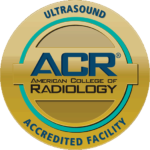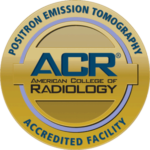
Nuclear Medicine is a branch of radiology in which small amounts of a safe low dose radioactive solution (known as a radiotracer) is used to diagnose, determine the severity of, or treat a variety of diseases. The radioactive substance is typically injected into the bloodstream, inhaled or swallowed.
This radiotracer travels through the area being examined and gives off energy in the form of gamma rays which are detected by a special camera attached to a computer to create images of the inside of your body, including the structure and function of organs, tissues, bones or a system in the body.
Nuclear Medicine imaging provides unique information that often cannot be obtained using other imaging modalities and offers the potential to identify disease in its earliest stages. Nuclear Medicine tests are often used to look for cancer, infections, inflammation or poor functioning of an organ.
UDMI performs the following nuclear medicine imaging:
Heart (Cardiac SPECT Stress and MUGA)
- Visualize heart blood flow and function
- Detect coronary artery disease and the extent of coronary stenosis
- Assess damage to the heart following a heart attack
- Evaluate treatment options such as bypass heart surgery and angioplasty
- Evaluate the results of revascularization procedures
- Evaluate heart function before and after chemotherapy
Bones
- Evaluate bones for fractures, infection and arthritis
- Evaluate for metastatic bone disease
- Evaluate painful prosthetic joints
- Evaluate bone tumors
- Identify sites for biopsy
Lungs
- Scan lungs for respiratory and blood flow problems
Renal
- Analyze native kidney blood flow and function
- Detect urinary tract obstruction
- Evaluate for hypertension related to the kidney arteries
- Evaluate kidneys for infection versus scar
Thyroid/Parathyroid
- Measure thyroid function to detect an overactive or underactive thyroid
- Evaluate thyroid nodules
- Evaluate for hyperparathyroidism
Gallbladder/Biliary
- Identify inflammation or abnormal function
- Assess post-operative complications
Liver
- Evaluate liver function
- Evaluate liver tumor
Others
- Evaluate activity of sarcoidosis
For additional resources related to nuclear medicine, including benefits and risks of the imaging procedure, how to prepare, and more, we encourage you to visit radiologyinfo.org.















